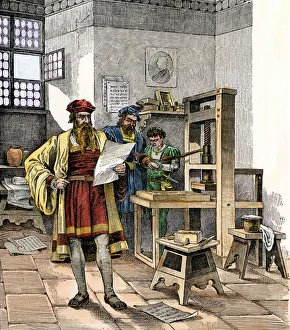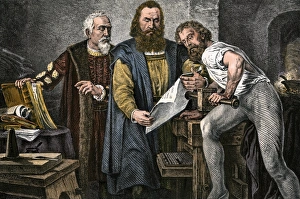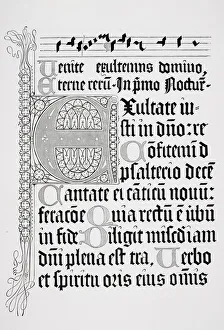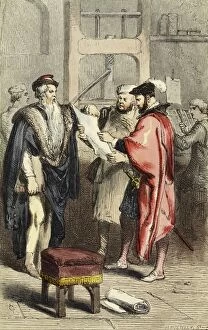Fust Collection
"Fust: Pioneers of Printing Revolution" Gutenberg's printing press, invented in the 1450s, marked a turning point in human history
All Professionally Made to Order for Quick Shipping
"Fust: Pioneers of Printing Revolution" Gutenberg's printing press, invented in the 1450s, marked a turning point in human history. Among the key figures behind this groundbreaking invention were Johann Gutenberg, Peter Schoeffer, and Johann Fust. Together, they revolutionized the way knowledge was disseminated. In Frankfort, Germany, these inventors established their print shop and introduced color lithography to enhance their works' visual appeal. Their collaboration resulted in remarkable achievements such as the second psalter printed by Fust and Schoeffer. This beautifully illustrated masterpiece showcased their mastery of color lithography. Their dedication to excellence extended beyond religious texts; they also printed Latin Bibles that captivated readers with their intricate illustrations and meticulous attention to detail. These works became treasured possessions for those fortunate enough to own them. The impact and Schoeffer's contributions did not go unnoticed. The Caxton Celebration commemorated their accomplishments through engravings that depicted scenes from early printing history. Johann Faust played an essential role in furthering the art of printing alongside these pioneers. His involvement helped refine techniques used during the production of significant works like the Gutenberg Bible—an iconic masterpiece that forever changed how books were created. One remarkable example is a page from a Psalter printed by Fust and Schoiffer in Mainz during 1459—a testament to their craftsmanship and attention to detail. This exquisite piece showcases both technical precision and artistic finesse. Fust's legacy lives on through his printer's device—the first ever used—symbolizing innovation and progress within the world of printing. It served as a mark of quality assurance for readers who sought reliable sources of information during this transformative era. The work undertaken by Fust, Schoeffer, Gutenberg, Faust, and countless others shaped our modern society by democratizing access to knowledge through mass production methods that had never been seen before.
















